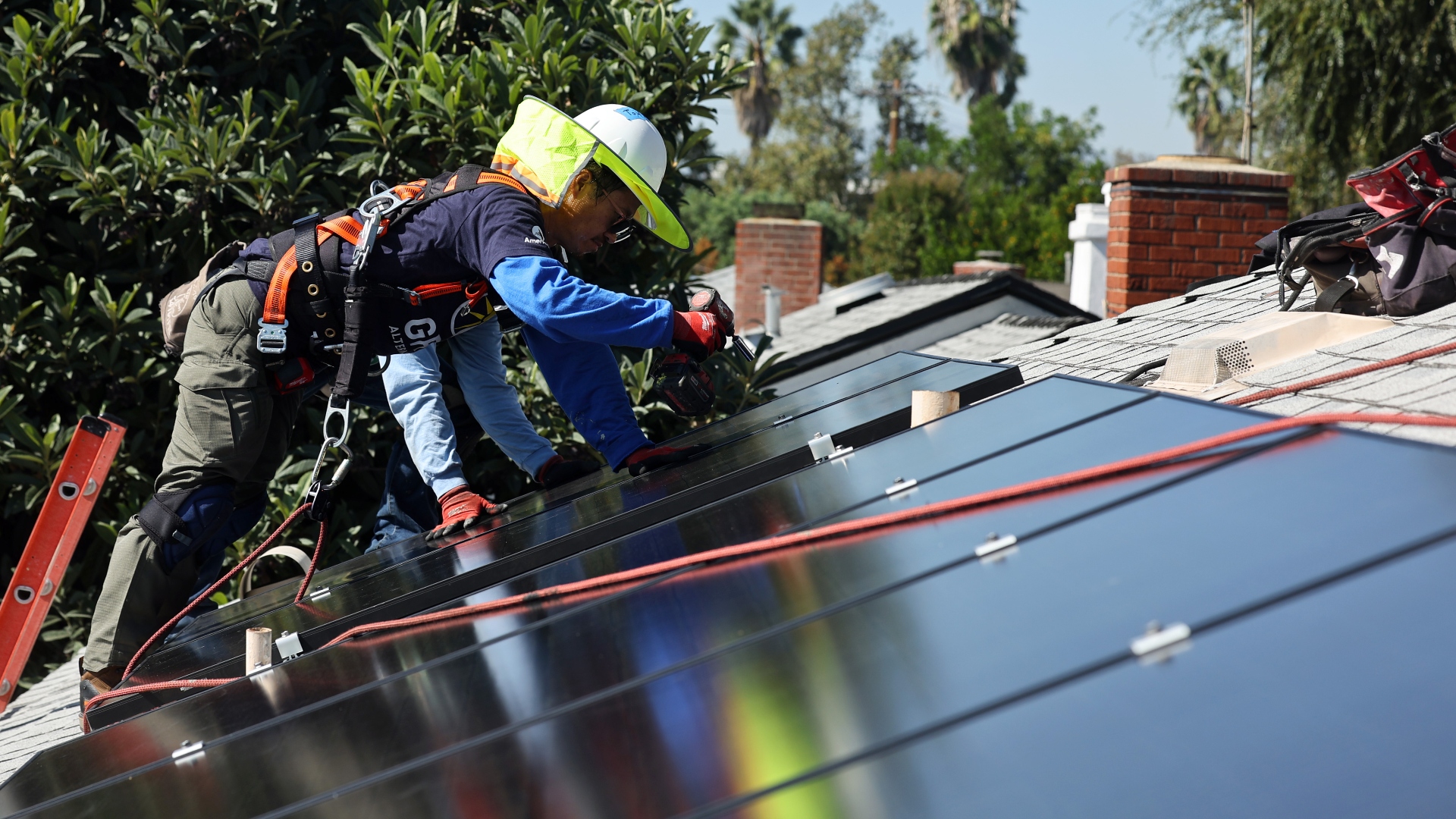California has been a leader in rooftop solar adoption for years thanks to incentives and compensation programs. But policies from utilities and state lawmakers are removing incentives and making it more expensive for residents to have solar on their homes. Supporters of the changes say the new policies will reduce everyone’s electric bills, but solar advocates say cutting back on rooftop solar will make it harder for California to meet its renewable energy goals. We talk with experts about the future of rooftop solar in California and what this moment means for renewable energy.
California Rooftop Solar Is at a Crossroads

Guests:
Sammy Roth, climate columnist, LA Times
Mohit Chhabra, senior analyst, NRDC
Bernadette Del Chiaro, senior vice president for California, Environmental Working Group
Show Highlights
The State of Rooftop Solar in California
Rooftop solar has transformed California’s energy landscape. “We’ve put rooftop solar on 15% of our buildings and parking lots” — the equivalent of four Hoover Dams and five Diablo Canyon nuclear plants, says Bernadette Del Chiaro, senior vice president for California at the Environmental Working Group.
She notes that solar adoption cuts across income and racial lines. “It’s become the favorite home improvement project for millions of low- and middle-income families. Over 50% of solar adopters are families of color.”
The Cost-Shift Debate
However, rooftop solar also stirs debate about fairness. Critics argue that solar customers avoid paying their share of the fixed costs that keep the grid running. When a household lowers its bill through net metering, it contributes less to maintaining the grid — so others have to pay more, says Mohit Chhabra of the Natural Resources Defense Council.
Del Chiaro disputes this framing. Rooftop solar helps flatten electricity demand, which reduces the need for costly new infrastructure, he says. That benefit often gets ignored in these cost-shift arguments.
Policy Shifts and Legal Battles
In 2022, the California Public Utilities Commission slashed compensation rates for new rooftop solar customers, a change that took effect in April 2023. Solar advocates argue the move undermines the state’s clean energy goals.
Lawmakers introduced Assembly Bill 942 to address some concerns, but Chhabra warns it could have unintended impacts on homeowners and the housing market.
Meanwhile, environmental groups have sued the state, challenging the CPUC’s decision and its method for calculating the costs and benefits of net metering.
Balancing Distributed and Utility-Scale Solar
Experts say California must balance rooftop solar with large-scale clean energy projects. Every serious analysis shows we need both — utility-scale power and decentralized solar — to build a reliable, cost-effective clean grid, said Sammy Roth of the LA Times.
Chhabra adds that large-scale solar is more efficient: Utility-scale panels cost about a third as much per unit of energy because you can cite them optimally.
The Path Forward
Del Chiaro envisions a more decentralized grid that relies heavily on community-based energy. If we built more local solar and allowed energy sharing within communities, he says, we could shrink and strengthen the grid. We won’t meet our clean energy goals without rooftop solar.
Chhabra stresses the importance of fairness. As we transition to clean energy, he says, we need equitable rates so all users — including large commercial customers — contribute appropriately to the grid.
Conclusion
A former Texas oil worker, now a California solar installer, summed it up this way: “If it rained oil, you better bet we’d all put buckets on our roofs.”
As California navigates the future of rooftop solar, one thing is clear: balancing distributed and utility-scale resources — while ensuring fair, equitable policies — will be key to achieving the state’s climate goals.
This content was edited by the Forum production team but was generated with the help of AI.